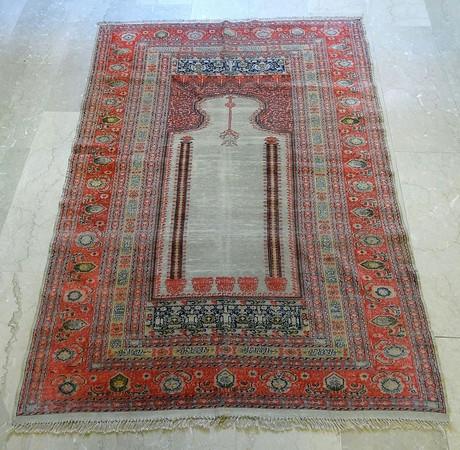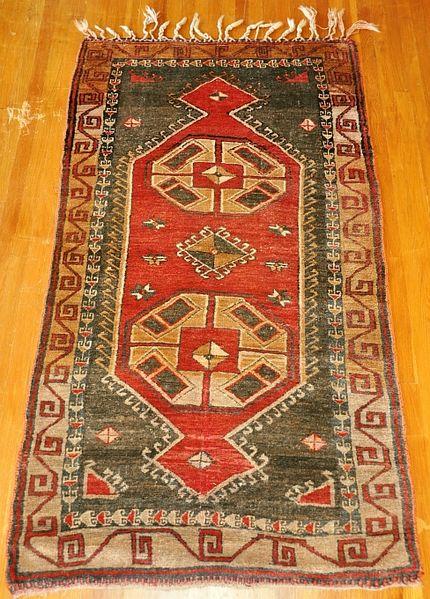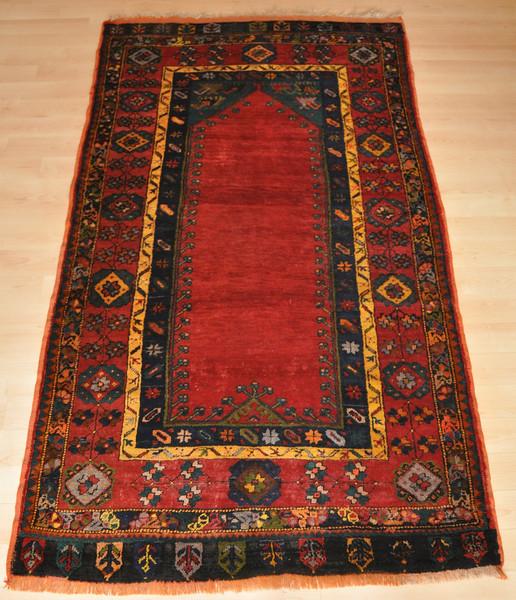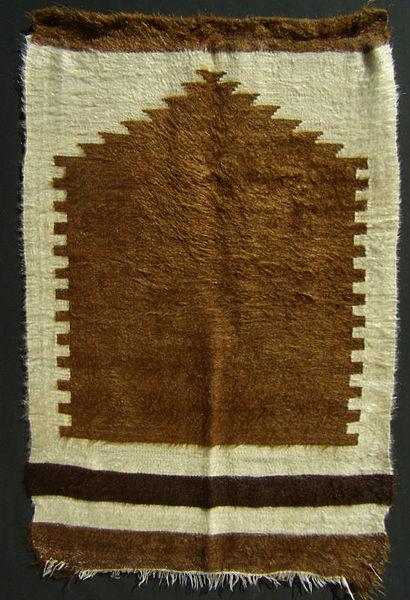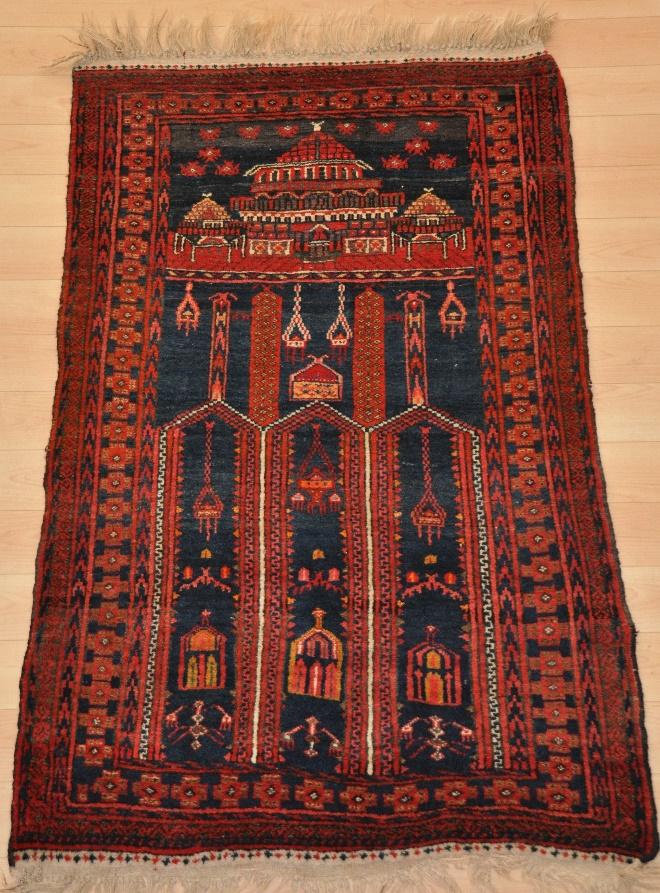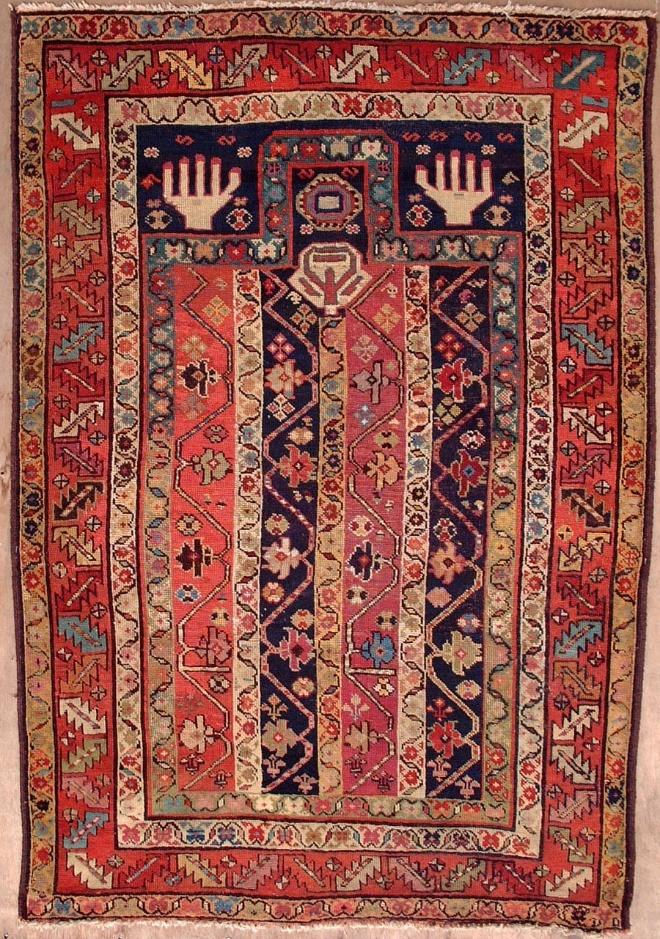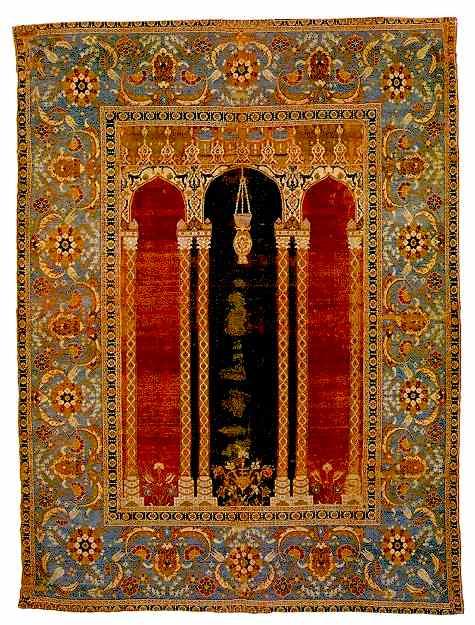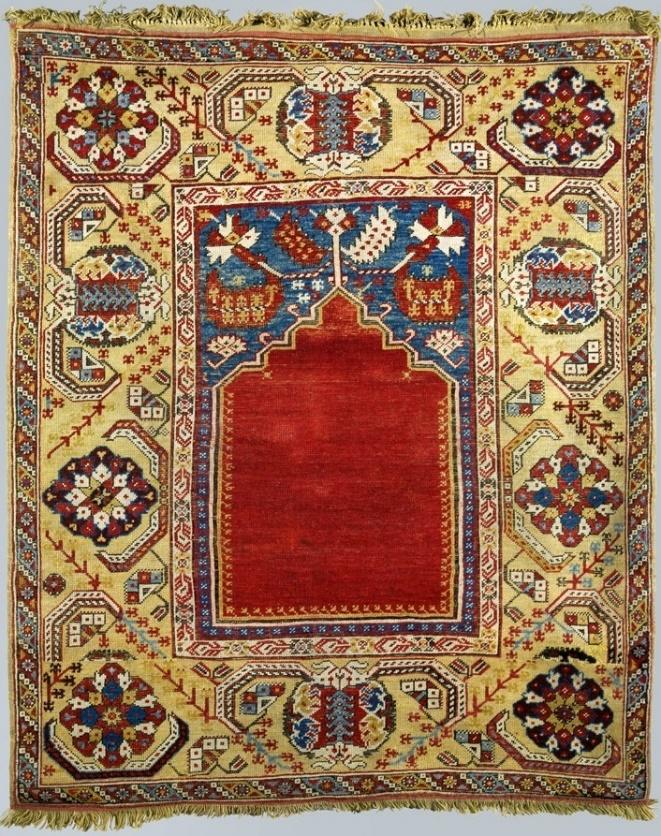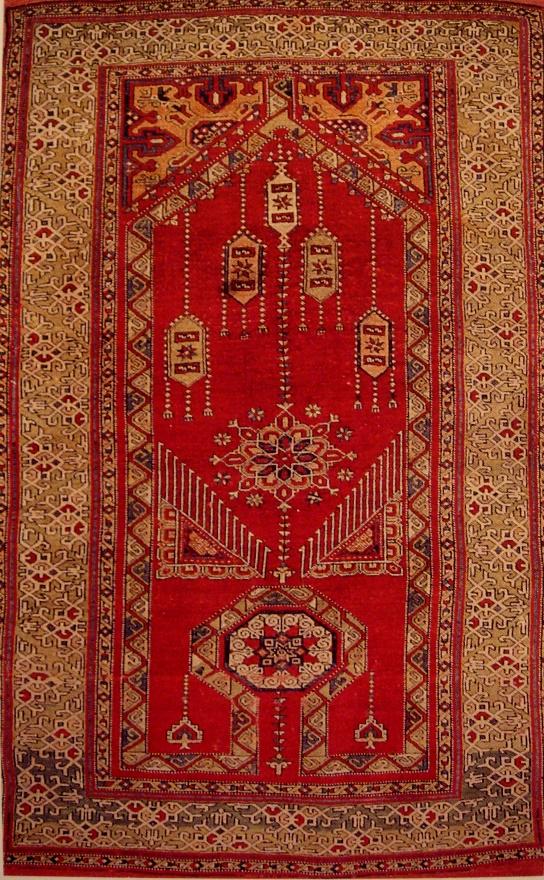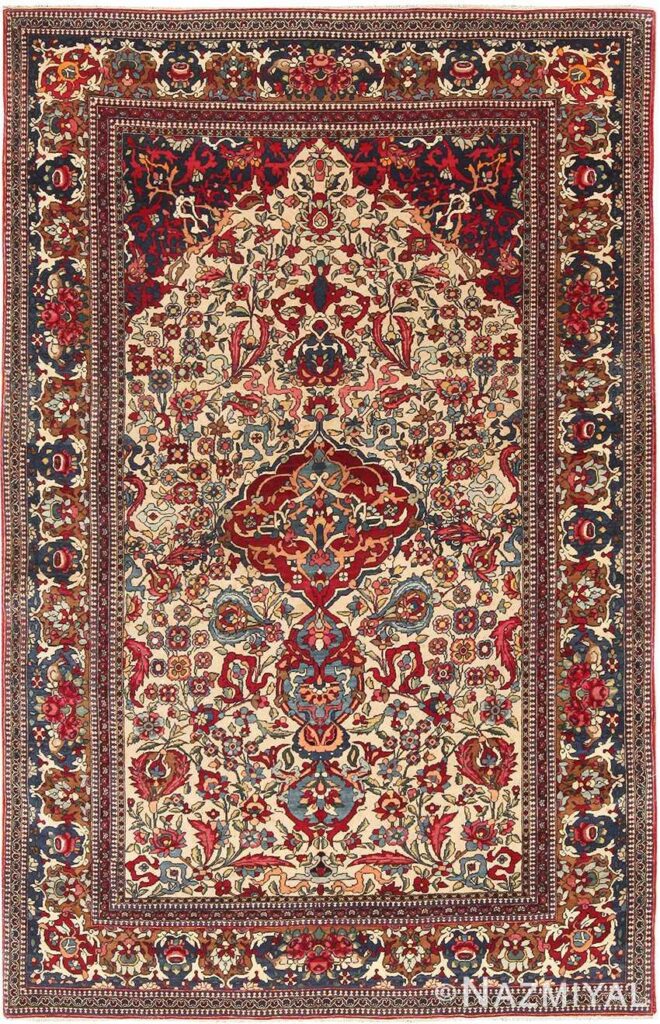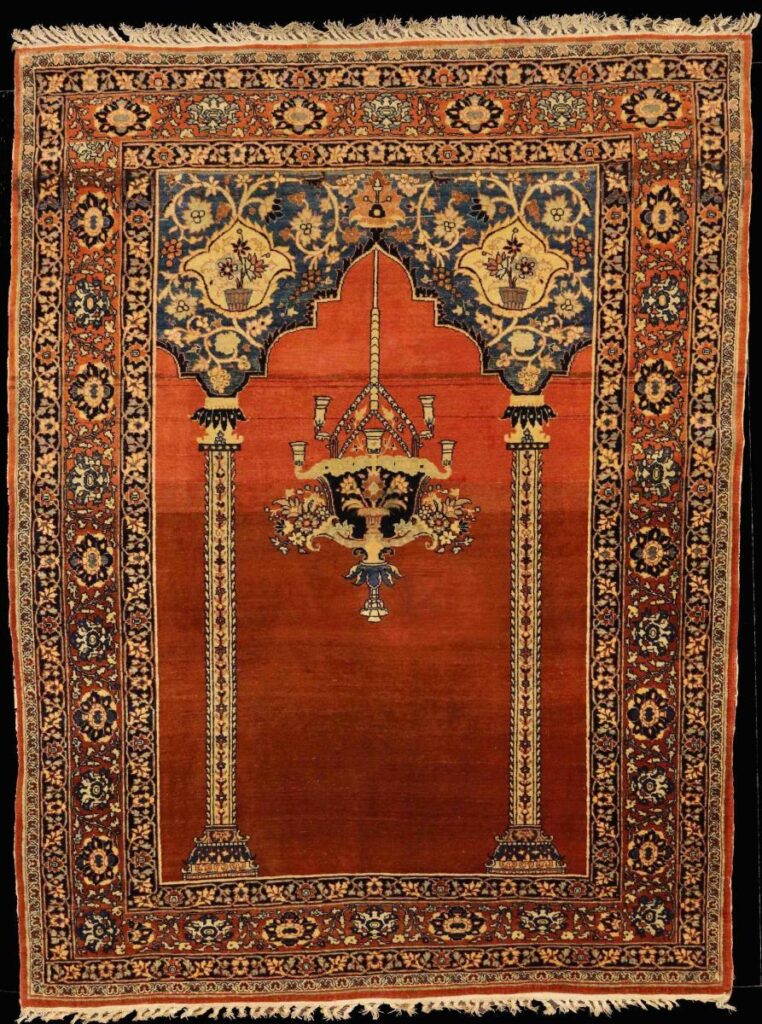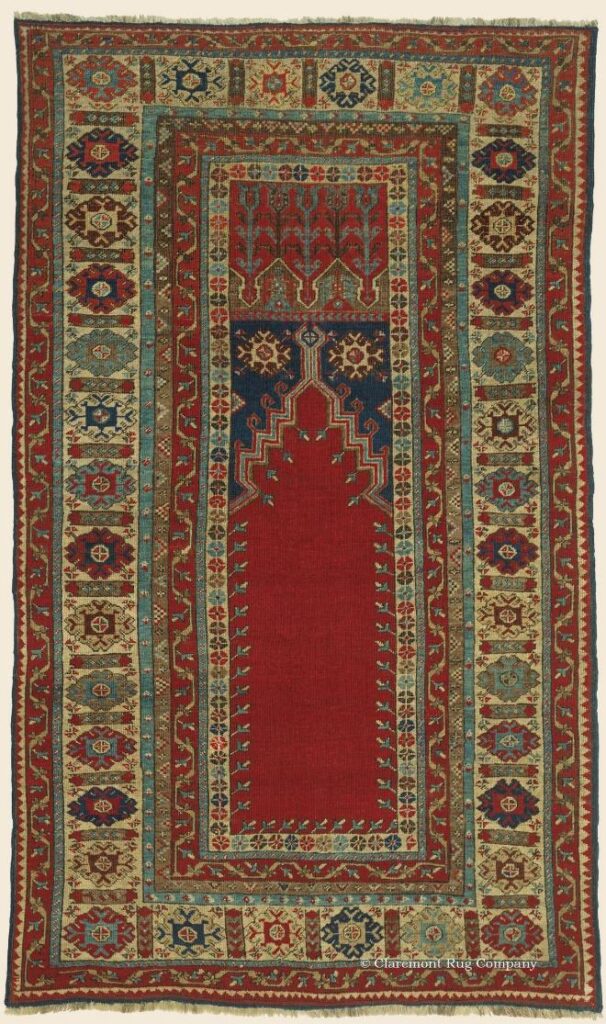Prayer Rug
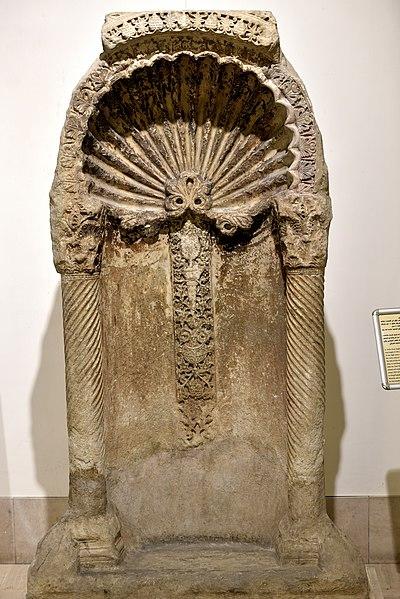
A prayer rug (also called mehraby, sejjadeh, janamaz or niche rug) is an area rug with a design of Mihrab on which Muslims do their praying.
The essential motif of a prayer rug is Mihrab. It is a semicircular niche in the wall of a mosque that indicates the qibla, that is, the direction of the Ka’ba in Mecca and hence the direction that Muslims should face when praying.
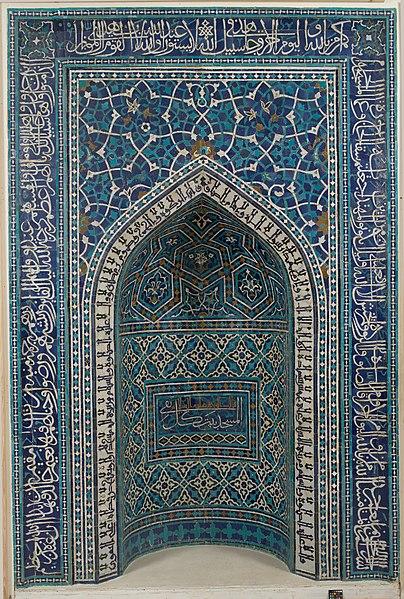
Various versions of prayer designs exist, from simple kilims used by common people to court rugs used by Mughal Emperor of India. Columns may be shown supporting the arch and oil lamps may be shown hanging from the top of the arch.
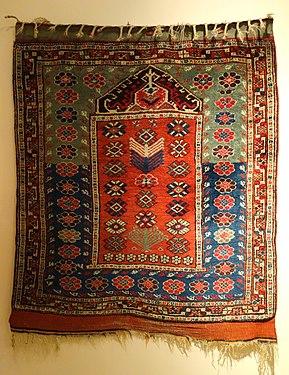
The motif occurs throughout Muslim countries, including Iran, Turkestan, India, North African countries such as Morocco and Algeria, etc. but it is most frequent in Turkey.
Lots of Anatolian towns and villages have their own version of the motif such as pointed and round mihrabs, stepped mihrabs, triple-arch mihrabs, or double-column mihrabs.
There is a kind of prayer rug with niches at either ends called ‘double prayer rug’ in western markets.
